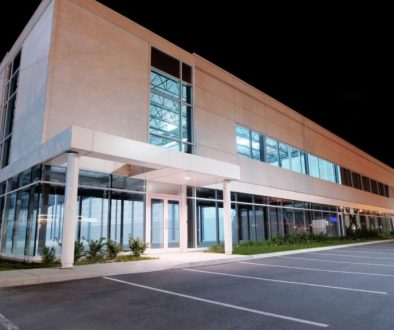Retail vs. Industrial Properties: Investment Comparison
Investing in real estate can be a lucrative venture, but understanding the differences between retail and industrial properties is crucial for making informed decisions.
Retail vs. Industrial Properties: Investment Comparison
When it comes to commercial real estate, two of the most prominent sectors are retail and industrial properties. Each offers unique benefits, challenges, and investment opportunities. This blog post will delve into the critical aspects of both property types, guiding you through the nuances of retail versus industrial investments, their market dynamics, potential returns, and factors to consider before making a decision.
Introduction
Investing in commercial real estate has become an attractive option for many investors seeking to diversify their portfolios and generate passive income. Among the various property types available, retail and industrial properties stand out as two of the most popular choices. While both sectors have their merits, they cater to different market needs and present distinct investment profiles.
In this blog post, we will explore key differences between retail and industrial properties, including their market trends, rental income potential, risks, and long-term value appreciation. Understanding these factors will help you make informed decisions when considering investing in either sector.
Understanding Retail Properties
- Retail properties serve as locations where consumers purchase goods and services directly. This category includes shopping centers, standalone retail stores, and mixed-use developments that combine residential and commercial spaces.
- The retail sector has been significantly affected by the rise of e-commerce. According to Statista, global retail e-commerce sales are projected to grow to $6.39 trillion by 2024. This shift has forced traditional brick-and-mortar retailers to adapt their business models to survive.
- For investors, retail properties can provide attractive rental income and longer lease terms, often ranging from five to ten years. However, they also carry risks related to changing consumer preferences and the economic environment.
- For example, a well-located shopping center can yield consistent cash flow, particularly if it features popular anchor tenants that drive foot traffic. On the other hand, a retail space dependent on a niche market may struggle if consumer demand shifts.
The Landscape of Industrial Properties
- Industrial properties typically include warehouses, distribution centers, manufacturing facilities, and logistics hubs. As the backbone of the supply chain, industrial properties are crucial for e-commerce operations, making them increasingly valuable.
- The industrial sector has experienced remarkable growth, particularly in the wake of the COVID-19 pandemic, which accelerated the shift toward online shopping and demand for efficient supply chain solutions. According to CBRE, the industrial real estate sector saw a record-high absorption rate, indicating strong demand for warehouse spaces.
- Investors often find industrial properties attractive due to their lower maintenance requirements and higher rental yields compared to retail properties. Lease terms for industrial spaces can also span ten to twenty years, providing stability and predictable income.
- A case in point: A logistics center located near major transportation routes may yield significant returns, especially if it attracts large e-commerce or manufacturing tenants looking for strategic distribution points.
Investing Considerations: Retail vs. Industrial
- One of the primary considerations when evaluating retail and industrial investments is the economic cycle’s impact on each sector. Retail properties can be more sensitive to economic downturns, as consumer spending typically declines during recessions. Conversely, industrial properties may prove more resilient, given their essential role in the supply chain.
- Cash flow potential is another critical factor. While both sectors can provide steady income, industrial properties often feature shorter vacancy periods due to sustained demand for logistics and warehousing. Retail spaces, however, may experience longer vacancies, particularly if a major tenant vacates.
- Property management is also a consideration. Retail properties may require more hands-on management due to tenant turnover and the need for maintaining a vibrant shopping environment. In contrast, industrial properties generally involve less day-to-day management.
- Additionally, zoning regulations and location play a significant role in the investment’s success. Retail properties must be situated in high-traffic areas to attract customers, while industrial spaces often thrive near transportation hubs or major highways for efficient logistics.
Market Trends and Future Outlook
- Both retail and industrial markets are experiencing significant changes driven by technological advancements and shifting consumer behaviors. Retailers are increasingly adopting omnichannel strategies, combining online and offline shopping experiences. Investors should consider properties that offer flexibility to adapt to these trends.
- The industrial sector is poised for continued growth, driven by e-commerce, automation, and changing supply chain dynamics. A report by Prologis indicates that the demand for logistics and warehousing spaces is projected to remain robust due to the ongoing transformation of retail and manufacturing sectors.
- Investors should also be aware of the impact of sustainability trends, as both retail and industrial properties increasingly focus on eco-friendly practices. Green buildings and energy-efficient designs not only contribute to environmental goals but may also enhance property values and attract socially conscious tenants.
Best Practices for Investing in Retail and Industrial Properties
- Conduct thorough market research before investing. Understand local economic conditions, rental rates, and property demand to make informed decisions.
- Diversify your portfolio by considering both retail and industrial investments. This strategy can help mitigate risks associated with economic fluctuations.
- Evaluate the financial health of potential tenants before signing leases. Strong tenants can provide stability and reduce the risk of vacancies.
- Consider engaging a commercial real estate broker like Tower Business Brokers, Inc. to navigate the complexities of the market. Their expertise can help you identify lucrative opportunities and negotiate favorable terms.
- Stay updated on market trends and shifts in consumer behavior. Adapting to changing demands can position your investments for success in a competitive landscape.
Conclusion
Understanding the distinctions between retail and industrial properties is crucial for making informed investment decisions. Both sectors offer unique opportunities and challenges, and the best choice ultimately depends on your investment goals, risk tolerance, and market conditions.
As you explore the commercial real estate landscape, leverage the insights from this article to evaluate your options critically. Whether you’re drawn to the dynamic world of retail or the stable potential of industrial properties, being armed with knowledge will empower you to make strategic investments that align with your financial objectives.
Ready to take the next step in your real estate investment journey? Explore our listings at Tower Business Brokers, Inc. and contact us today to discover how we can assist you in finding the perfect investment opportunity tailored to your needs.



